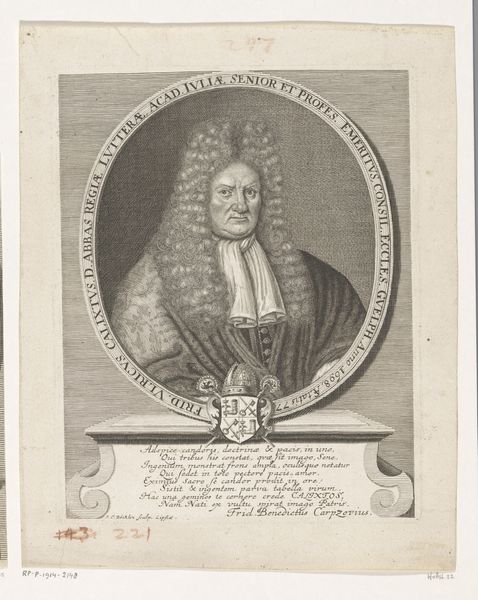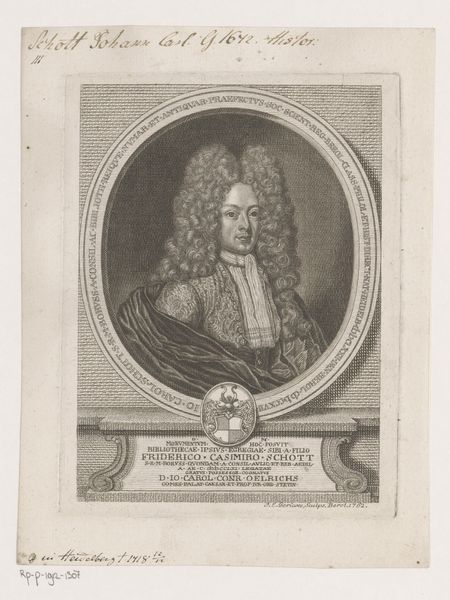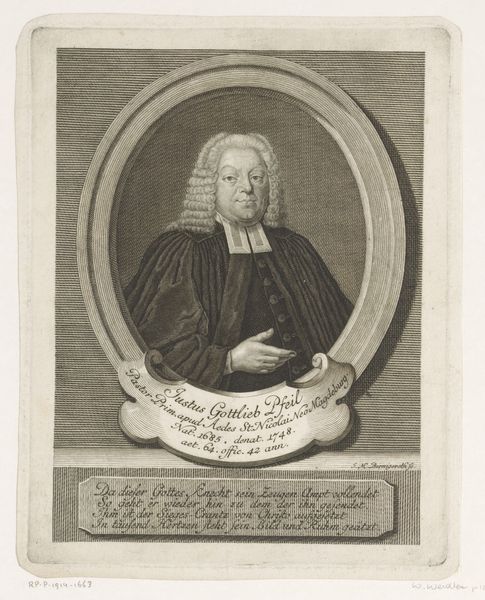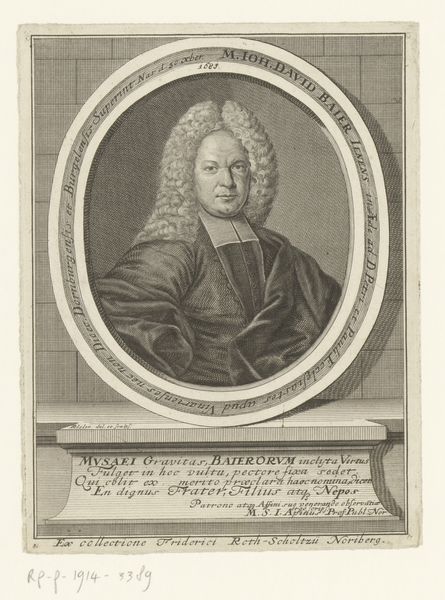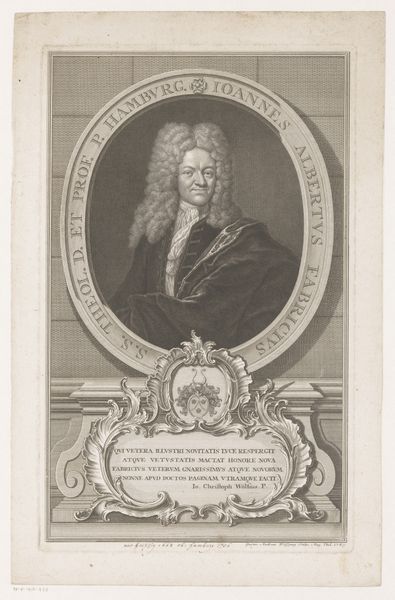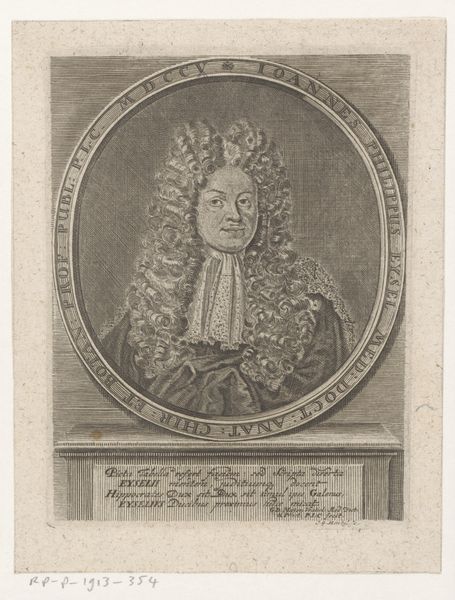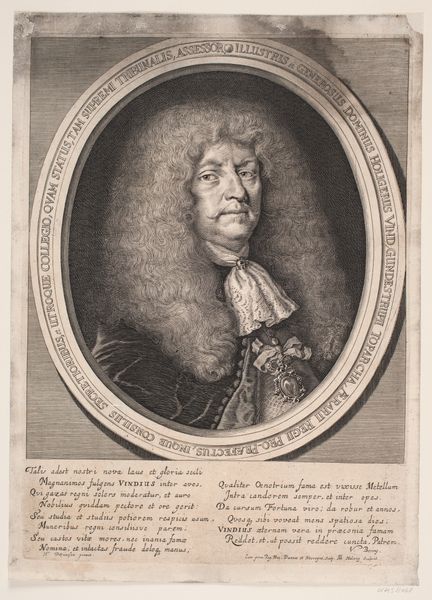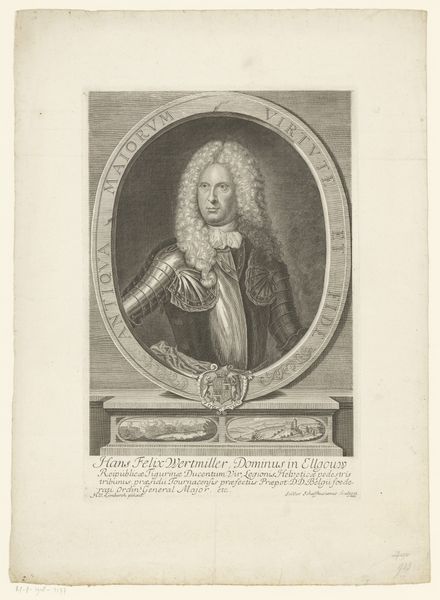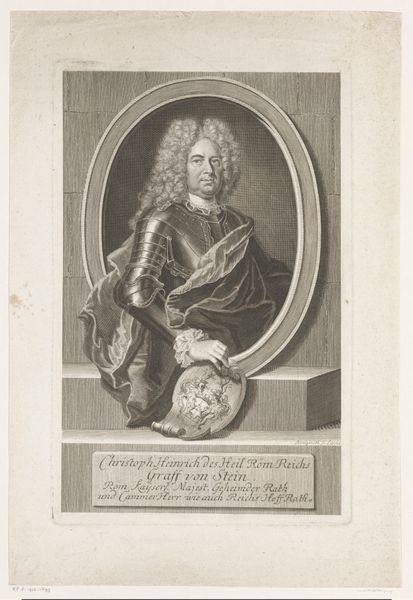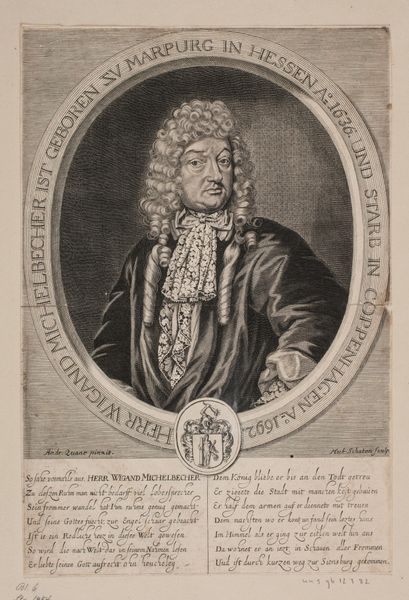
print, engraving
#
portrait
#
baroque
# print
#
history-painting
#
academic-art
#
engraving
Dimensions: height 201 mm, width 142 mm
Copyright: Rijks Museum: Open Domain
This portrait of Johann Jaenisch was made by Johann Oertl around 1707, and it's an engraving. This means the image was incised into a metal plate, probably copper, and then printed. Look closely and you can see the delicate network of lines that make up the image. Engraving was a highly skilled and laborious process. The artist would have used a tool called a burin to carefully carve the lines into the metal. The depth and thickness of the lines would determine the tone and texture of the print. The time and expertise put into such a work speaks to the status of the sitter: a high ranking doctor. The sharp lines of the engraving lend the portrait a sense of formality, while the texture creates depth and volume, especially in Jaenisch's elaborate wig. Consider that this was made possible by highly specialized labor, from the artist to the papermaker. This portrait embodies the intersection of craftsmanship, artistic skill, and the social hierarchies of the time.
Comments
No comments
Be the first to comment and join the conversation on the ultimate creative platform.
